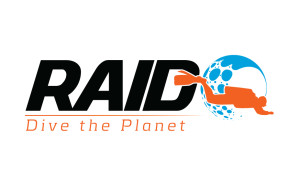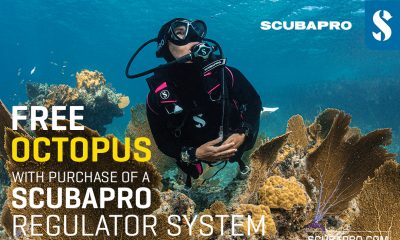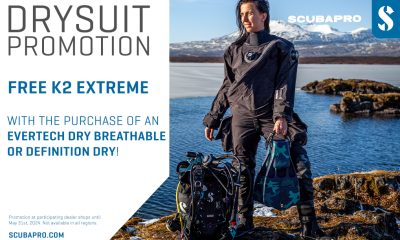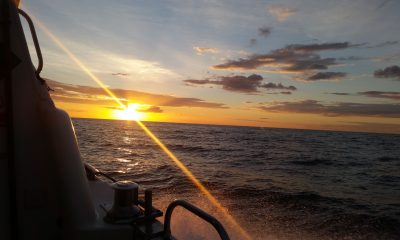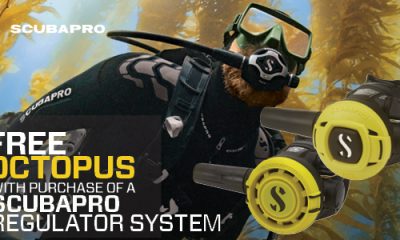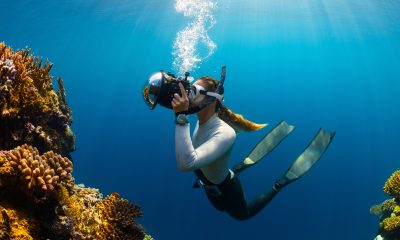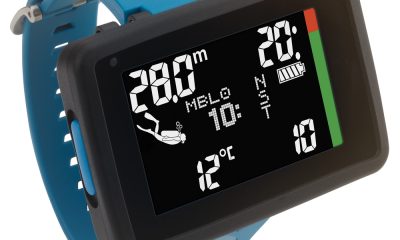News
A Beginners Guide to Tech Diver Jargon
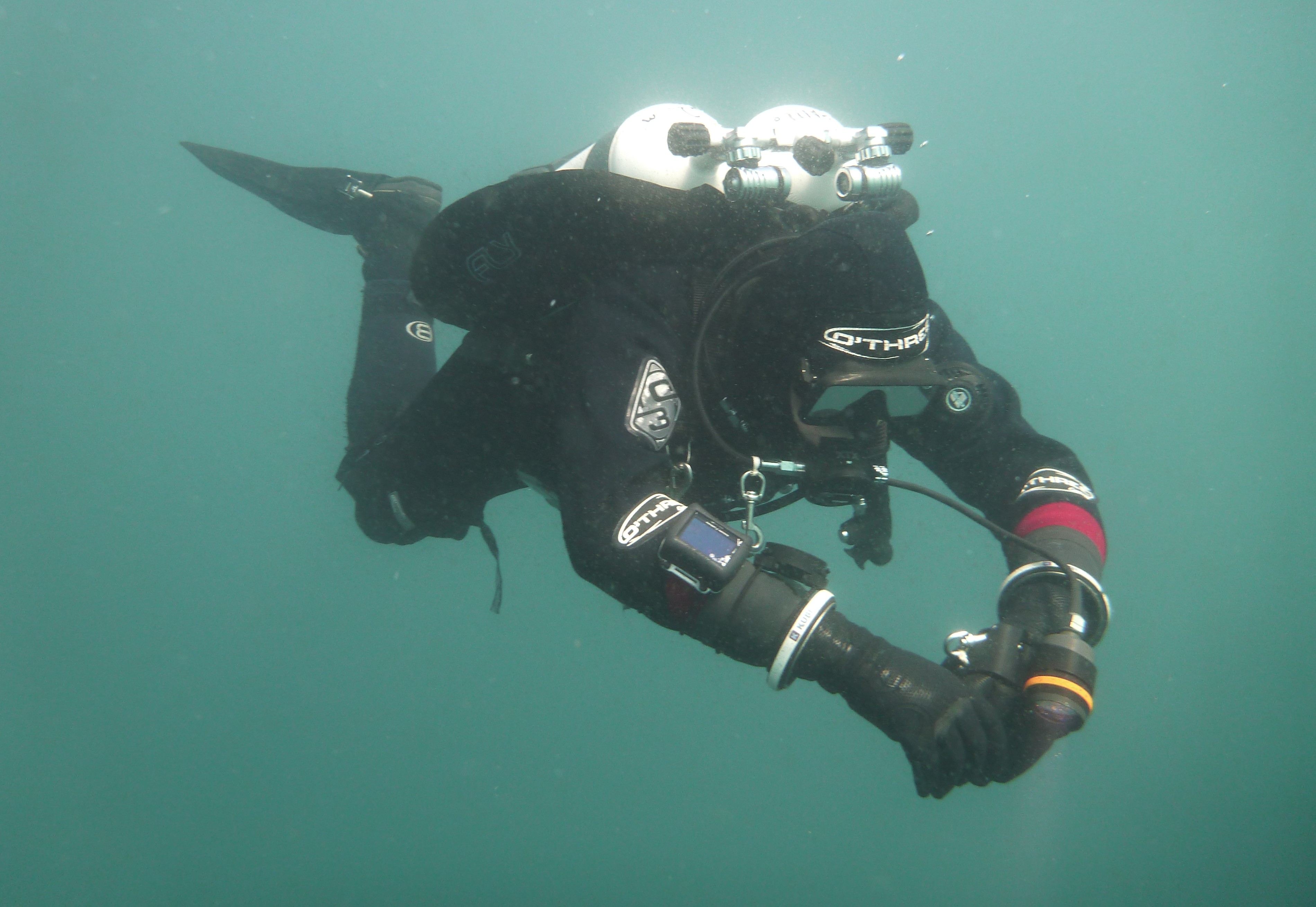
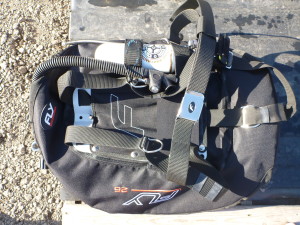 So, you have decided to be a tech diver. You have picked your instructor with great care and you feel confident about your future. Now all you’ve got to do is pop down your local dive centre and get yourself some shiny new kit. How hard can that be?
So, you have decided to be a tech diver. You have picked your instructor with great care and you feel confident about your future. Now all you’ve got to do is pop down your local dive centre and get yourself some shiny new kit. How hard can that be?
Well you are faced with a few problems. If you are heading down the rebreather path, 90% of dive retail staff will spend an hour telling you what an idiot you are, can they have an invite to your funeral, “my Grandad wore a rebreather in the war putting bombs on Jerry boats”, etc, etc, blah, blah.
If you are going down the open circuit route those same staff will tell you what a pile of bollocks tech is quoting such memorable lines as “I went to 60 metres on a single ten in Sharm last year,” “All that planning and f**king about for a 60 minute dive, I went to Wraysbury last week and did 62 minutes on a single ten!”
And a lot of the time whether you are CCR or OC the shop geezer has no idea what the fook you are on about when you ask for specialised equipment anyway.
OK, so I’m exaggerating just a little bit. Or am I?
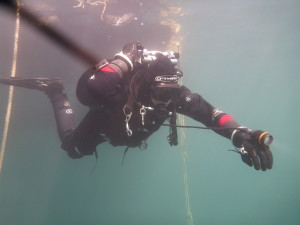 Seriously though, more and more dive shops are embracing tech and will have more than a basic knowledge of as technical divers requirements. They will also look after you and give you the guarantee that if the kit is not up to the job they will replace or fix it. A lot of stores will actually help you build your kit, and these are the primary reasons I buy most of my kit in stores rather than the Internet. I’m sure you’ll all agree that buying recreational gear is hard enough without some serious advice and help from the shop dude……so just imagine tech!
Seriously though, more and more dive shops are embracing tech and will have more than a basic knowledge of as technical divers requirements. They will also look after you and give you the guarantee that if the kit is not up to the job they will replace or fix it. A lot of stores will actually help you build your kit, and these are the primary reasons I buy most of my kit in stores rather than the Internet. I’m sure you’ll all agree that buying recreational gear is hard enough without some serious advice and help from the shop dude……so just imagine tech!
In this article, let’s have a serious laugh at all the technical equipment names and what they actually refer to so we can impress the person behind the counter (or know when he or she is pulling a fast one).
- Twinset with manifold with wide bands – two tanks stuck together with really fat (and I mean ‘PH’ PHAT stainless steel bands) with a knob in the middle to turn one side off (kind of).
- Back Gas – Normally this refers to the twinset or actually the gas carried in it.
- Environmentally sealed, balanced adjustable regulators for back gas – high quality regulators for the twinset. Shiny new regs compliment the wing. Very techy! You will need two sets, one primary and one backup. It’s all about redundancy. You don’t need an octopus on each set though! And you only need one gauge.
- Long hose – this is a 2 metre hose for the primary regulator. You’ll need a P-Clip attached to this hose so refer to P-Clips further down.
- Short Hose – this is the backup regulator that is worn around the neck by means of a bungee tied around the mouthpiece.
- O2 Regs – regulators that are Oxygen clean so they don’t blow the back of the boat off when you turn them on (Running O2 through a dirty regulator can have catastrophic results). Unfortunately, in Europe they will probably come with a nice new M26 thread instead of standard DIN attachment. This thread is F’ing useless as it presumes that all divers are idiots and can’t manage to put the O2 regulator on the O2 tank. Typical Brussels and all it’s bollocks. Get a standard DIN if you can and f**k Europe and its directives!!
- Wing – a flying SMB? No, it’s a BCD that only inflates behind the diver, like a wing. Wild, eh? Wings have better buoyancy control, nice and flat and clean, less drag, and Jedi looks. BCD’s are soo betamax! They come in single or double bladder. This means that you have a primary inflator on a single and a primary and backup inflator on a double. Again it’s all about redundancy. The regulators on the twinset feed both inflators. You do not need a double bladder wing if you dive drysuit, as the drysuit is your buoyancy backup in the event of a wing failure.
- Plate – A Stainless Steel, Aluminium, Polycarbonate or even Titanium plate to which the twinset is attached. The reason we use a plate is to provide rigidity for the diver.
- Harness – This is webbing and D Rings attached to the plate. There are many different styles of harness available but they all do the same job, they just have different features. The beauty of having a wing, plate and harness is that there is no clutter around the diver making him or her very streamlined.
- Umbilical lights – This is a canister light with an umbilical wire that leads to the light head. If you are serious about diving, this is the style of light for you. Available in HID or LED. LED is now the standard as the bulb has an incredibly long lifespan and is highly shock resistant unlike the HID light, which is quite fragile and immensely expensive to replace. The design allows a small light head to be worn on the hand and still allow the hand to be free to work (unlike a standard hand held torch). These are good for tech, good for rec.
- Red Bag – Red SMB (Surface Marker Buoy). Using one of these properly will make you a better recreational diver as well.
- Yellow Bag – You guessed it but this time it’s yellow.
- Dry Bag – This is not a dry SMB, but a drysuit. Must be black otherwise you’re not going to be recognised as being serious. Will keep you warm, so you can dive year round, and you will be amazed at the buoyancy and trim you will achieve in a drysuit.
- Gators – Nothing to do with big crocodile type animals found in the Everglades. Gators are much like climbing gators; they stop the material on the calves flapping about. For a diver, this means we are streamlined and also, you don’t have to wear ankle weights, as the air simply CAN’T get to your feet. I reckon that 90% of divers using ankle weights in drysuits can benefit using gators and heavier fins.
- Jets – Lovely small bladed rubber fins that will allow you to frog kick, helicopter turn and reverse fin with ease. Perfect for tight overhead environments. I wear them, but I can do all of these fin kicks in Mares Quattros so don’t get too carried away. Split fins will NOT cut it I’m afraid. Get some duck tape out and put them back together how they were meant to be, instead of that manufacturing defect that they have convinced us is an enhancement.
- Reel – A pile of string on a spool with a handle. Some are awesome; most are suicidal in the wrong hands.
- Spool – A pile of string on a spool with NO handle.
- Z-knife – This is a plastic frame that holds a razor blade in a preformed C- section. Z knives are used for cutting while pulling.
- Depth Timer – A digital depth and dive timer.
- Multi Gas Switchable Dive Computer – This is a computer that can handle the rigours of mixed gas diving. Suunto, Scubapro, Hollis etc all make multi gas computers. Most modern dive computers will allow you to select and switch two different gases while underwater; perhaps you are already wearing one? However, there are many machines available now that are able to store and switch many different gases. These computers can handle Air, Nitrox and Trimix and can even bounce between Open and Closed Circuit. A Multi gas computer is fast becoming standard equipment for tech divers.
- P Clip – get that shit clipped away…. When the shit hits the fan, you know where it is. A P-clip is like the clip you would use to clip (a gated clip with a swivel) a leash to a dog collar but bigger and of higher quality. They come in many different styles and we use them primarily to secure the primary regulator when not in use and also the SPG. Stainless Steel is the choice for most tech divers as brass clips ‘gum up’ quite quickly. Plus – Brass rhymes with arse.
- Double ended P Clip – Same as above but two gates and no swivels. Used on stage bottles, reels, spools and we generally have one attached to our kit for emergency use if another clip were to break.
- Snorkel – I am still trying to work out how to breathe through this appendage underwater. If anyone has any clues, I am willing to try, but in my experience the only thing it’s good for is getting alcohol into your mouth really quickly, whilst being laughed at by all your friends. If you want to have a laugh, take one of these in a cave programme.
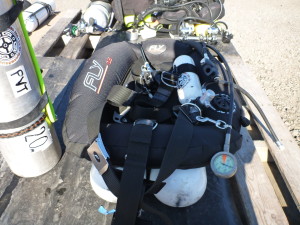
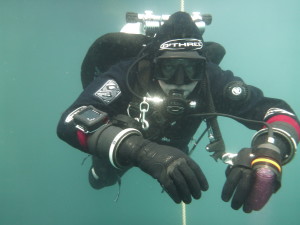 Now you have a basic idea of some technical jargon. Hopefully you have got the idea that tech is really not that complicated. I believe that most divers are put off doing tech training as we make it out to be so complicated and dangerous. It isn’t! Maybe it was once but now things have moved on and most people can actually participate.
Now you have a basic idea of some technical jargon. Hopefully you have got the idea that tech is really not that complicated. I believe that most divers are put off doing tech training as we make it out to be so complicated and dangerous. It isn’t! Maybe it was once but now things have moved on and most people can actually participate.
For those techies reading this, I have written it with a recreational diver in mind. I want divers to come over to the dark side and have a go. We all know that once you get to the dark side, we normally find it’s really sunny.
Paul is the Director of Training at RAID. To find out more about the courses that RAID offers, visit www.diveraid.com.
Gear News
Scubapro Free Octopus Promotion 2024

Free Octopus with every purchase of a SCUBAPRO regulator system
Just in time for the spring season, divers can save money with the FREE OCTOPUS SPRING PROMOTION! Until July 31st SCUBAPRO offers an Octopus for free
with every purchase of a regulator system!
Get a free S270 OCTOPUS with purchase of these combinations:
MK25 EVO or MK19 EVO with A700
MK25 EVO or MK19 EVO with S620Ti
MK25 EVO or MK19 EVO with D420
MK25 EVO Din mit S620Ti-X
Get a free R105 OCTOPUS with purchase of the following combinations:
MK25 EVO or MK19 EVO with G260
MK25 EVO or MK17 EVO with S600
SCUBAPRO offers a 30-year first owner warranty on all regulators, with a revision period of two years or 100 dives. All SCUBAPRO regulators are of course certified according to the new European test standard EN250-2014.
Available at participating SCUBAPRO dealers. Promotion may not be available in all regions. Find an authorized SCUBAPRO Dealer at scubapro.com.
More information available on www.scubapro.com.
Blogs
Northern Red Sea Reefs and Wrecks Trip Report, Part 3: The Mighty Thistlegorm

Jake Davies boards Ghazala Explorer for an unforgettable Red Sea diving experience…
Overnight, the wind picked up, making the planned morning dive a bit bumpy on the Zodiacs to the drop point on Thomas Reef. There, we would dive along the reef before descending through the canyon and then passing under the arch before ascending the wall with a gentle drift. The site provided great encounters with more pelagic species, including shoals of large barracuda, tuna, and bigeye trevally.
Once back on the boat, it was time to get everything tied down again as we would head back south. This time, with the wind behind us, heading to Ras Mohammed to dive Jackfish Alley for another great gentle drift wall dive before then heading up the coast towards the Gulf of Suez to moor up at the wreck of the Thistlegorm. This being the highlight wreck dive of the trip and for many onboard, including myself, it was the first time diving this iconic wreck. I had heard so much about the wreck from friends, and globally, this is a must on any diver’s list. Fortunately for us, there was only one other boat at the site, which was a rarity. A great briefing was delivered by Ahmed, who provided a detailed background about the wreck’s history along with all the required safety information as the currents and visibility at the site can be variable.

Kitting up, there was a lot of excitement on deck before entering the water and heading down the shoreline. Descending to the wreck, there was a light northerly current which reduced the visibility, making it feel more like the conditions that can be found off the Welsh coast. At 10m from the bottom, the outline of the wreck appeared as we reached the area of the wreck which had been bombed, as our mooring line was attached to part of the propeller shaft. Arriving on deck, instantly everywhere you looked there were many of the supplies which the ship was carrying, including Bren Carrier tanks and projectiles that instantly stood out.

We headed around the exterior, taking a look at the large propeller and guns mounted on deck before entering the wreck on the port side to take a look in the holds. It was incredible to see all the trucks, Norton 16H, and BSA motorcycles still perfectly stacked within, providing a real snapshot in time.

Overall, we had four dives on the Thistlegorm, where for all of the dives we were the only group in the water, and at times, there were just three of us on the whole wreck, which made it even more special, especially knowing that most days the wreck has hundreds of divers. Along with the history of the wreck, there was plenty of marine life on the wreck and around, from big green turtles to batfish, along with shoals of mackerel being hunted by trevally. Some unforgettable dives.

The final leg of the trip saw us cross back over the Suez Canal to the Gobal Islands where we planned to stay the night and do three dives at the Dolphin House for the potential of sharing the dive with dolphins. The site, which included a channel that was teeming with reef fish, especially large numbers of goatfish that swam in large shoals along the edge of the reef. These were nice relaxing dives to end the week. Unfortunately, the dolphins didn’t show up, which was okay as like all marine life they are difficult to predict and you can’t guarantee what’s going to be seen. With the last dive complete, we headed back to port for the final night where it was time to clean all the kit and pack before the departure flight the next day.

The whole week from start to finish on Ghazala Explorer was amazing; the boat had all the facilities you need for a comfortable week aboard. The crew were always there to help throughout the day and the chefs providing top quality food which was required after every dive. The itinerary providing some of the best diving with a nice mixture of wreck and reef dives. I would recommend the trip to anyone, whether it’s your first Red Sea liveaboard in the Red Sea or you’re revisiting. Hopefully, it’s not too long before I head back to explore more of the Red Sea onboard Ghazala Explorer.

To find out more about the Northern Red Sea reef and wrecks itineraries aboard Ghazala Explorer, or to book, contact Scuba Travel now:
Email: dive@scubatravel.com
Tel: +44 (0)1483 411590
Photos: Jake Davies / Avalon.Red
-

 News3 months ago
News3 months agoHone your underwater photography skills with Alphamarine Photography at Red Sea Diving Safari in March
-

 News3 months ago
News3 months agoCapturing Critters in Lembeh Underwater Photography Workshop 2024: Event Roundup
-

 Marine Life & Conservation Blogs2 months ago
Marine Life & Conservation Blogs2 months agoCreature Feature: Swell Sharks
-

 Blogs2 months ago
Blogs2 months agoMurex Resorts: Passport to Paradise!
-

 Blogs2 months ago
Blogs2 months agoDiver Discovering Whale Skeletons Beneath Ice Judged World’s Best Underwater Photograph
-

 Gear Reviews3 months ago
Gear Reviews3 months agoGear Review: Oceanic+ Dive Housing for iPhone
-

 Marine Life & Conservation2 months ago
Marine Life & Conservation2 months agoSave the Manatee Club launches brand new webcams at Silver Springs State Park, Florida
-

 News3 months ago
News3 months agoWorld’s Best Underwater Photographers Unveil Breathtaking Images at World Shootout 2023


